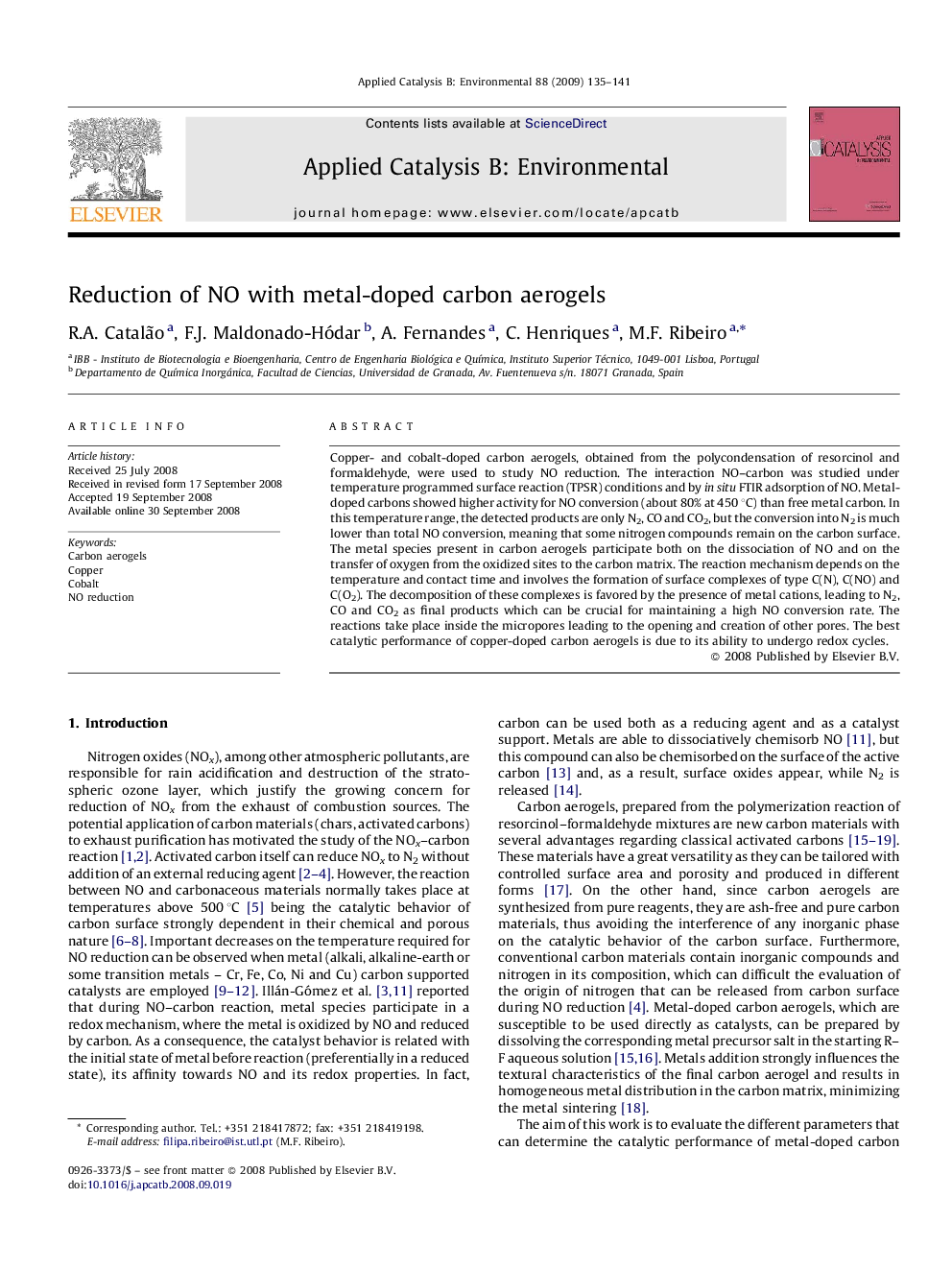| Article ID | Journal | Published Year | Pages | File Type |
|---|---|---|---|---|
| 48130 | Applied Catalysis B: Environmental | 2009 | 7 Pages |
Copper- and cobalt-doped carbon aerogels, obtained from the polycondensation of resorcinol and formaldehyde, were used to study NO reduction. The interaction NO–carbon was studied under temperature programmed surface reaction (TPSR) conditions and by in situ FTIR adsorption of NO. Metal-doped carbons showed higher activity for NO conversion (about 80% at 450 °C) than free metal carbon. In this temperature range, the detected products are only N2, CO and CO2, but the conversion into N2 is much lower than total NO conversion, meaning that some nitrogen compounds remain on the carbon surface. The metal species present in carbon aerogels participate both on the dissociation of NO and on the transfer of oxygen from the oxidized sites to the carbon matrix. The reaction mechanism depends on the temperature and contact time and involves the formation of surface complexes of type C(N), C(NO) and C(O2). The decomposition of these complexes is favored by the presence of metal cations, leading to N2, CO and CO2 as final products which can be crucial for maintaining a high NO conversion rate. The reactions take place inside the micropores leading to the opening and creation of other pores. The best catalytic performance of copper-doped carbon aerogels is due to its ability to undergo redox cycles.
